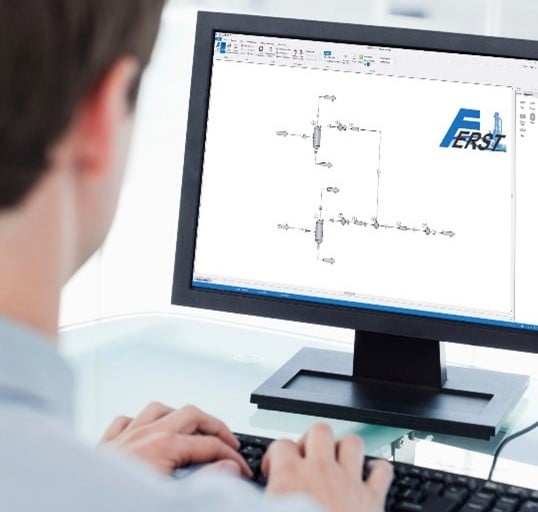FERST Software - Fauske Emergency Relief System Tool
Fauske & Associates (FAI) has updated our DIERS emergency relief sizing tools with FERST software powered by CHEMCAD. FERST is a complete package that merges practical and easy-to-use methods, from our PrEVentTM (Practical Emergency Vent Sizing) software, with the material property, thermodynamics, and software development expertise of ChemstationsTM. FERST also enables the direct use of measured temperature rise rates from low Φ-factor adiabatic calorimetry (e.g., the VSP2 and ARSST) for dynamic simulation, similar to our legacy VSDS (Vent Sizing Dynamic Simulation) software.

Easy to use software which sets the standard for safety and relief calculations
FERST powered by CHEMCAD makes designing or evaluating relief systems simple and more rigorous while incorporating all the latest methodologies and applicable standards. Key FERST software features include:
Choose from the Comprehensive List of the Latest Methodologies
- System Types: Vapor (tempered), Gassy (non‑tempered), Hybrid (tempered with gas generation), and Non-reactive fire exposure systems (API 520/521, API 2000, OSHA 1910.106, NFPA 30)
- Design Methodologies: Leung-Omega (with the option for ISO 4126-10 omega parameter determination), Fauske Vapor/Gas, and General Screening Equations
- Flow Regime Options: Bubbly, Churn Turbulent, Homogeneous, Vapor Only, Liquid Only
Design New Relief Systems
- Enter information on the vessel, contents, and upset scenario
- Calculates the required size of relief device (rupture disk or pressure relief valve), and provides the allowable pressure losses through the inlet and/or outlet relief piping to ensure proper operation
Evaluate Existing Relief Systems - Statically
- Enter information on the installed relief device and relief piping and choose an upset scenario
- Maximum pressure and temperature the vessel would experience will be calculated
- Determine if the installed relief device will adequately protect the vessel for the upset scenario
Evaluate and Model Existing Relief Systems - Dynamically
- Model the relief event dynamically, using vessels and pipes on a flowsheet
- Simulate the change in vessel contents, physical properties, and system pressure over time
- Multiple options for source terms: specified temperature and/or pressure rise rates, low Φ-factor adiabatic calorimetry, zero-order kinetics (Coming soon), non-reactive fire exposure
- Model a single vessel, or multiple vessels venting simultaneously. Evaluate relief lines and headers shared by vessels to ensure they are sized adequately
Numerous Options for Material Property Evaluation
- Calculate pure chemical properties using DIPPR database with over 2500 chemicals
- Calculate liquid and vapor properties of mixtures
- Rigorously calculate Vapor-Liquid equilibria of a mixture - 40 different thermodynamic models
- Create new chemicals in a user database
- Predict properties for new chemicals or regress experimental data
User-friendly GUI & Technical Support from Industry Experts
- Customizable ribbon interface for easy operation
- Drag and drop flowsheet graphics
Technical Support from Industry Experts
